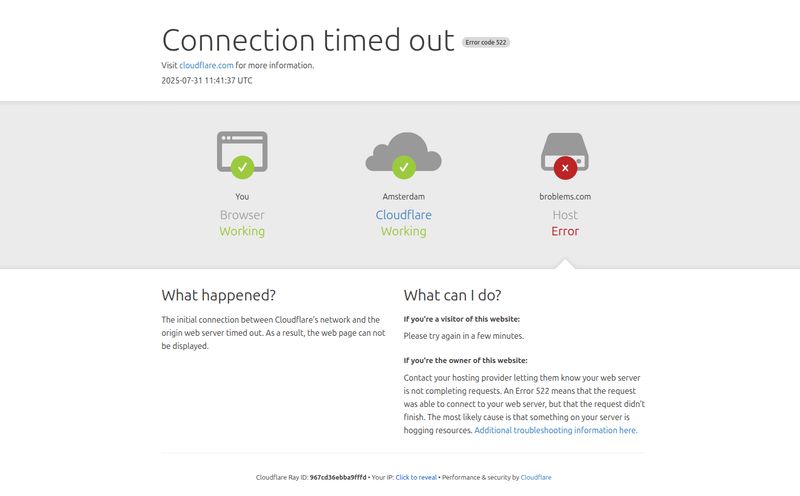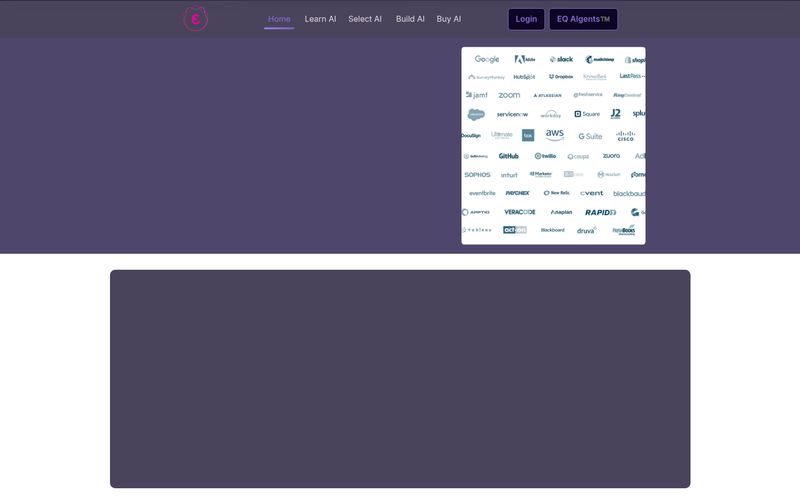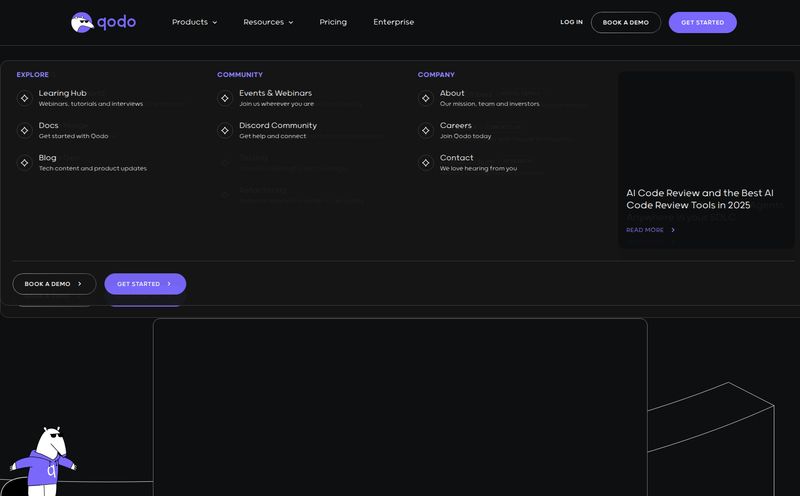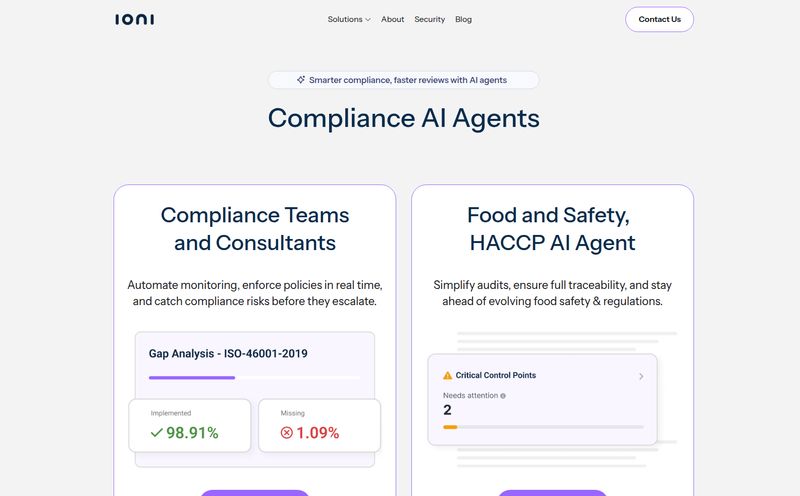The world of AI and Machine Learning can feel… chaotic. You’re wading through a swamp of fifty-tab browser sessions, dense academic papers that read like VCR manuals, and gurus on every social platform promising to make you an expert for the low, low price of a used car. It’s exhausting. Finding a genuinely useful, practical, and—dare I say it—free resource feels like finding a unicorn. A very nerdy, data-driven unicorn.
So, the other day, I was following a digital breadcrumb trail. It started with Hasty.ai, a name many in the MLOps space will recognize, and led me to a resource now living under the CloudFactory umbrella (they acquired Hasty back in 2022, for those keeping score). My first encounter was, hilariously, a Cloudflare error page. An 'Invalid SSL certificate'. My first thought? Classic. It’s a strangely humanizing thing to see; a reminder that even big, important tech platforms have days where they just don't want to cooperate. But I persisted, and I'm so glad I did. Because behind that momentary digital hiccup, I found the CloudFactory Computer Vision Wiki.
And folks, this might be one of those unicorns.
So, What Exactly is This Computer Vision Wiki?
Forget the dry, dusty definition of a 'wiki'. This isn't just a glossary of terms. I'd describe it as more of a well-annotated cookbook for anyone trying to actually build things with Computer Vision (CV). CloudFactory, a major player in the data annotation and human-in-the-loop AI space, has put together a resource that bridges the gap between high-level theory and a developer staring at a blank code editor at 2 AM.
It’s designed to be a comprehensive guide to core CV tasks—think Image Classification, Object Detection, Semantic Segmentation, all the greatest hits. It provides the 'what' and the 'why' alongside the 'how', which is a combination that’s surprisingly hard to come by. It aims to give you a solid foundation, not just a list of buzzwords to drop in your next meeting.
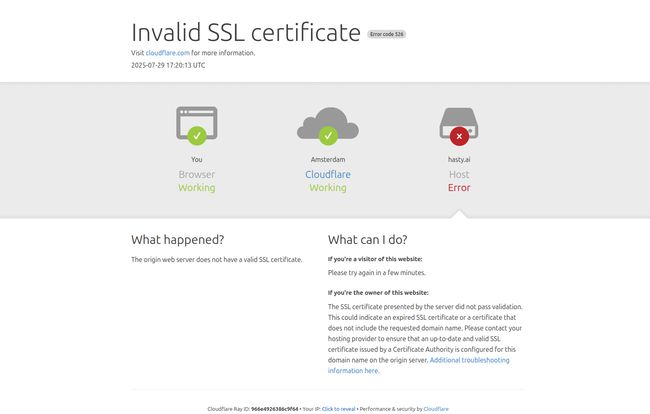
Visit CloudFactory Computer Vision Wiki
Breaking Down the Good Stuff: What’s Inside?
Okay, so what makes this thing tick? Why am I even writing about it? It’s because the structure is just so... sensible. It’s clear this was built by people who have actually been in the trenches of ML projects.
More Than Just Definitions
Yes, there's a comprehensive glossary. But the magic here is the idea of establishing a ground truth for terminology. If you've ever been in a project where one engineer's 'precision' is another's 'recall', you know how critical a shared vocabulary is. This wiki lays out the terms, from 'Bounding Box' to 'Non-Maximum Suppression', in a way that’s clear and context-rich. It’s the Rosetta Stone for your CV team.
Practical Code You Can Actually Use
This is the part that got me really excited. Theory is nice, but actionable code is where the value is. The wiki is packed with code examples that demonstrate the concepts. It’s one thing to read about loss functions; it’s another to see how it’s implemented in a few lines of Python. This practical focus demystifies the process and lowers the barrier to entry for people who learn by doing. I’ve always felt that seeing the code makes the whole concept click into place.
The Full AI Project Lifecycle
This isn't just about models. It covers the whole shebang. You’ll find clear explanations on:
- Core CV Tasks: The fundamental jobs you'd want a model to do.
- Model Architectures: The blueprints for different types of neural networks.
- Metrics: How to actually measure if your model is any good (a question that causes a lot of headaches).
- Loss Functions & Optimizers: The math that powers the learning process, explained simply.
- Augmentations: The clever tricks used to get more mileage out of your training data.
- Deployment Strategies: How to take your beautiful model and release it into the wild.
Seeing this all in one place gives you a much better picture of the entire pipeline, from data to deployment.
My Honest Take: The Highs and The Lows
No tool is perfect, right? So let’s get into the nitty-gritty. In my opinion, the pros here heavily outweigh the cons, but you should know what you’re getting into.
The biggest positive, by a country mile, is the structure and practical focus. It’s a guided curriculum that respects your intelligence. But the real kicker? The price tag. Or, the lack there of. This entire, comprehensive resource is 100% free. No sign-up wall, no 'enter your credit card for a trial'. In an industry that loves a four-figure price tag on education, this is huge.
Now, for the other side of the coin. The information states it assumes some prior knowledge of Computer Vision, and I'd agree. If you’ve never written a line of code and don't know what a 'pixel' is, this might be a steep cliff to climb. It’s not an 'AI for Absolute Dummies' guide. It’s more for someone who has a foundation and wants to build a proper house on top of it. You need to bring your own tools to the construction site.
Some might also point out that it’s presented from CloudFactory’s perspective. And... well, of course it is. They are experts in data labeling, so naturally, the content will lean into the areas where high-quality data is paramount. I don't see this as a bad thing. It's an expert sharing their specific expertise, not a neutral, sterile textbook. I'd rather learn from a seasoned chef's recipe book, even if it favors their brand of olive oil, than a generic one with no soul.
Who Should Be Bookmarking This Thing Right Now?
I can see a few groups of people getting a ton of value from this:
- The Aspiring ML Engineer: You know your Python basics, you’ve maybe done a course or two, and now you want to specialize in vision. This is your roadmap.
- The Product Manager: You need to talk intelligently with your dev team and understand the 'why' behind their timelines. This wiki is your secret weapon.
- The Data Science Student: A perfect supplement to academic lectures, providing the practical context that professors sometimes miss.
- The Seasoned Pro: Even experts need a quick refresher. This is a fantastic place to look up a specific metric or review an augmentation technique without digging through old GitHub repos.
Final Thoughts: Is the CloudFactory CV Wiki Worth Your Time?
Unquestionably, yes. Look, it’s not going to magically transform you into a world-class AI researcher overnight. No single resource can do that. But what it does offer is a clear, practical, and incredibly generous starting block and reference manual for one of the most exciting fields in technology.
It cuts through the noise and provides real, applicable knowledge. It’s the friendly senior engineer on your team who’s always happy to sketch out an architecture on the whiteboard for you. In a world of hype, the CloudFactory Computer Vision Wiki is a tool of substance. Go bookmark it. You’ll thank me later.
Frequently Asked Questions
- Is the CloudFactory Computer Vision Wiki really free?
- Yes, it is completely free to access and use. There are no hidden fees or sign-up requirements that I could find. It appears to be a resource CloudFactory provides to the community, which also doubles as great content marketing for them.
- Do I need to be an expert coder to use the wiki?
- You don't need to be an expert, but some foundational knowledge of programming, particularly Python, is highly recommended. The wiki includes code snippets, and you'll get the most out of it if you can understand the context of that code.
- Who is this wiki best for?
- It's ideal for developers, students, and product managers who have some basic tech knowledge and want to gain a deeper, practical understanding of Computer Vision concepts and implementation.
- How is this different from just watching YouTube tutorials?
- While YouTube is great, it can be disorganized. The wiki provides a structured, interconnected learning path. It’s more like a well-organized textbook than a random collection of videos, ensuring you get a holistic view of the subject.
- What is the connection between Hasty.ai and CloudFactory?
- CloudFactory, a leader in data labeling for AI, acquired Hasty.ai, a data-centric ML platform, in May 2022. This wiki is a great example of CloudFactory integrating Hasty's deep technical expertise into its own ecosystem to provide value to the broader AI community.
Reference and Sources
- CloudFactory Computer Vision Wiki - The main resource discussed in this article.
- CloudFactory Acquires Hasty Press Release - Official announcement of the acquisition.
- Cloudflare Error 526 Documentation - For the technically curious, an explanation of the SSL error I initially encountered.
